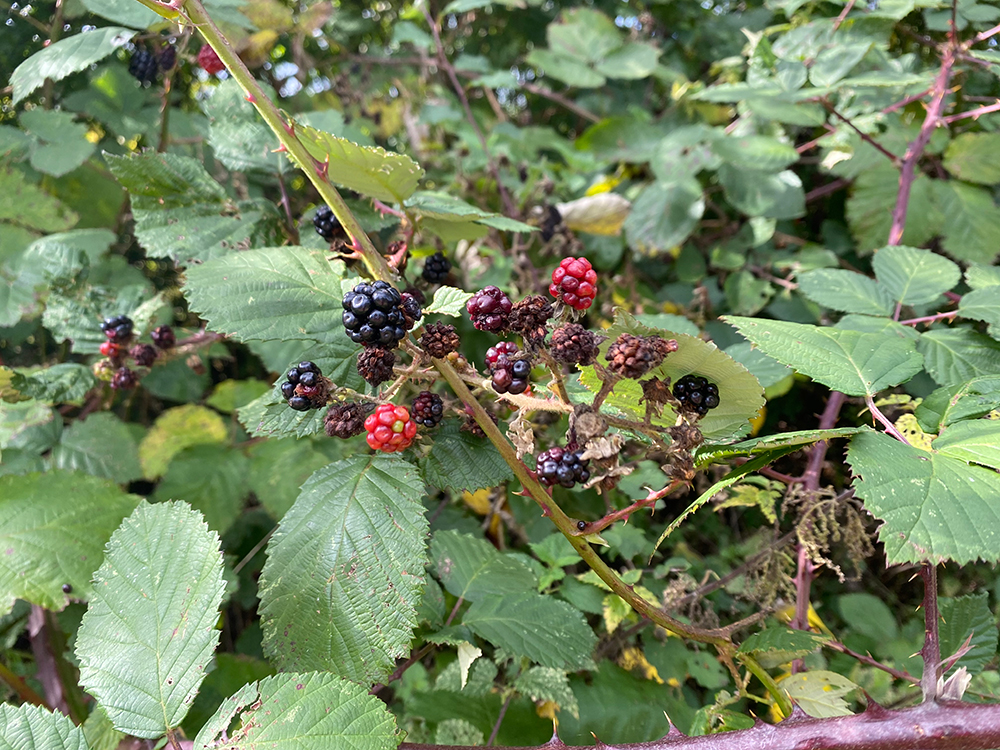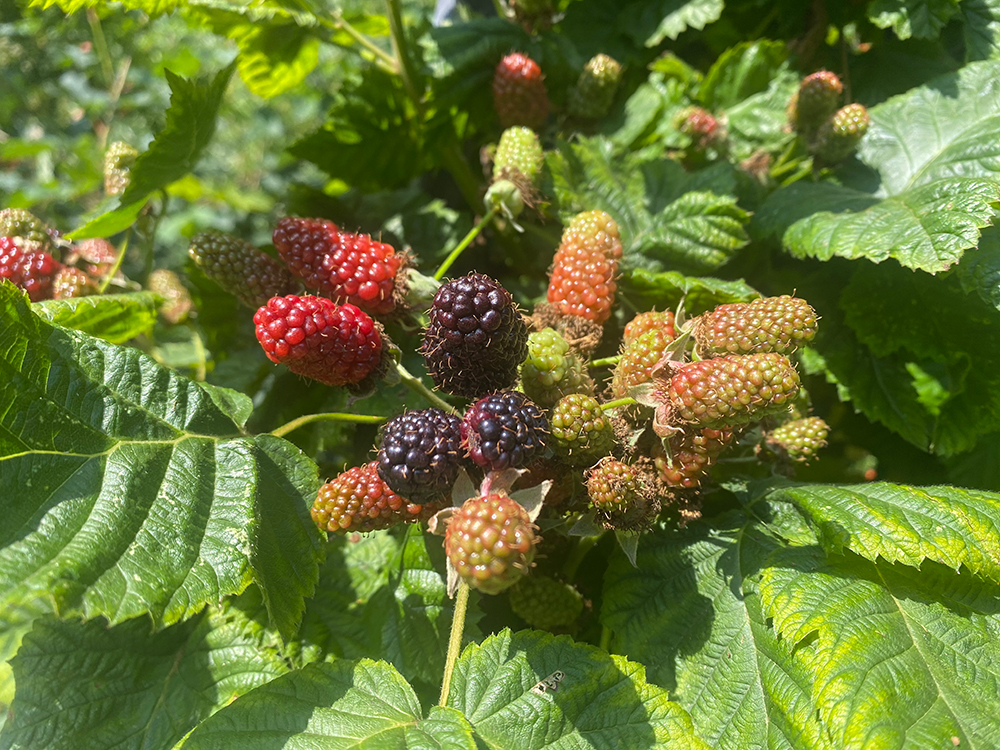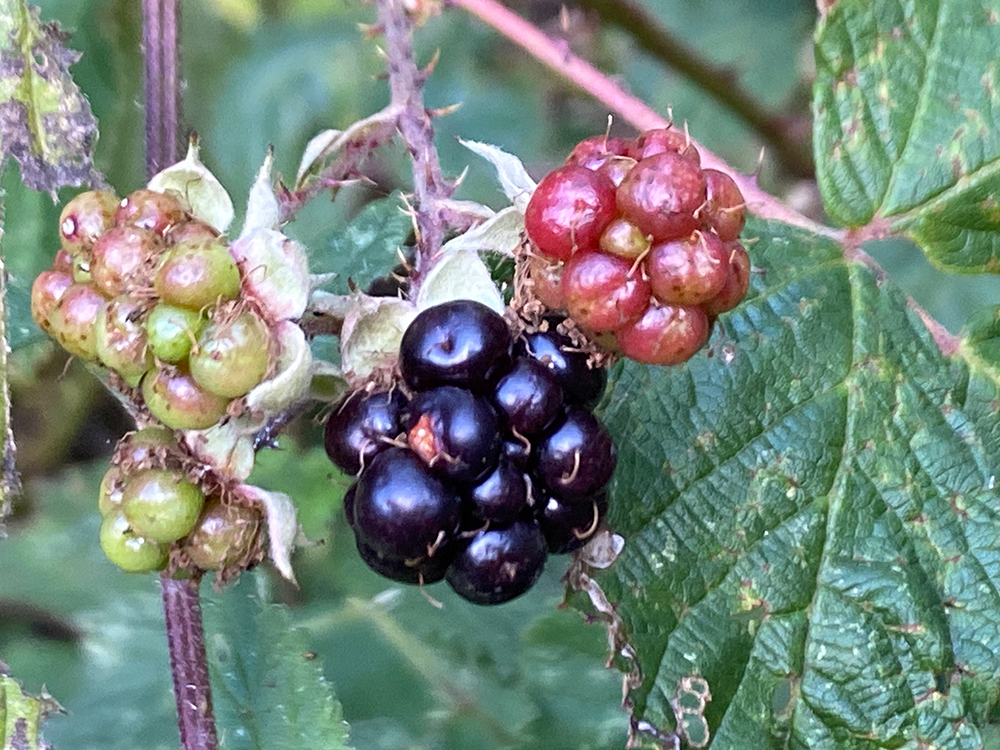Whether you want to plant for wildlife or deter burglars, the humble bramble has many attributes

I have a long and chequered history with the humble blackberry. As a child I lived on a crescent of houses and in the middle of the crescent was an allotment site, where we had a plot. We didn’t grow blackberries there; we didn’t need to. All we had to do was walk, or scramble around the edges of the site, where the cultivated plots reached the back fences of the houses. It was here, deliberate or not, that thick swaths of brambles created a jugular ripping, burglar proof barrier. At the end of school holidays before we embarked on the autumn term of lessons; teens and preteens armed with Tupperware pots clambered in, over and through the barbed wired brambles seeking out the juicy black fruits.
I don’t remember eating them fresh from the vines, but I do remember the bounty of bowls filled with ruby red blackened fruit oozing purple juice to match our fingers, shorts and sun blushed legs.
Most of the prized harvest became jam, but some went with the apples to soften the tart baked apples and redden the beige apple crumble into a pop tart fiesta of colour. Yum.
Red, red wine

Possibly a new phase in self-sufficiency evolved from these humble berries. Of course really I was simply exploring the botanical attributes of this wild plant as part of my degree in Botany. As I progressed from school to university and started to explore the magical (or not) effects of alcohol, on a typical student budget back then, blackberries provided an interesting and flavoursome base for some homemade wine. My word was it tasty and actually pretty strong in terms of alcohol content and even better it was virtually free. A row of corked bottles rested beneath a shelf in my student bedroom and were unveiled for special events. Well… For a short time. Until one night in the early hours I was woken by loud explosions as the bottles popped their corks and soaked the carpet with the ruby red elixir. A lesson in fermentation and the power of gases, perhaps, but an end to the experimentation for some time. Perhaps it’s a magic to be recreated, I can still taste the sweet rich flavours of the fruity concoction!
Wild treats
Junior foragers grow into adults and there’s little to match the joy of foraged treasures like bowls of berries for supper. It instils in us a gatherer mentality that is a useful skill and for some a vital source of ingredients. Of course, the berries themselves are food for wildlife too, harvesting ethics, rules and regulations apply to our wild berries too. It’s important to leave some for the wild creatures, but where there’s a glut it’s fine to fill your harvest baskets with the fresh fat berries.
Wild blackberries can clamber through a boundary hedge in the garden, but will quicky spread into the garden to grow into a thicket of barbed wiry stems. Their viscous thorns are good burglar deterrents but are a danger too for pets and little ones, so keep them under control where they pose a risk.
Thornless

Autumn is planting time and a great time to embellish your plot with edibles. Blackberries are a valid candidate, you can even grow cultivated forms of blackberries on your plot that will make huge, fat berries for all your culinary needs, and many of these vigorous plants are thornless too. That is a huge step forward for harvesting safely but I haven’t found the flavour the same as the wild cousins. Nevertheless, these rampant plants are easy to control, they fruit on last year’s stems so once your plants have generated the copious berries, you can cut those stems back to the ground as they will not fruit again. The new stems that grow alongside can be tied in neatly so that when they fruit the next year, the fruits are easy to reach and pick.
Walking wonders

One of the most fascinating things about blackberry plants is the way they walk. They have an uncanny knack of dropping the growing tip of a stem to the ground, where it roots into the soil. It’s a neat way to reproduce a good strain of a blackberry as the plant takes its own cuttings. Once the tip has rooted all you do is to cut the stem and dig up the new plant and pot it up until you are ready to plant it somewhere else, or give it away.
Food for pollinators
Fairly recent research from the National Botanic Gardens of Wales discovered that bramble flowers are now the most important plant for late summer forage for bees and another research project has shown that the flowers are also important for hoverflies.
The abundant flowers, that precede the fruit, have abundant protein rich pollen and copious nectar, important for the survival of many pollinators and especially important as the pollen and nectar are accessible and produced in late summer and early autumn when other forage has significantly declined.
Devil food

Like most wild plants there is copious folklore surrounding the blackberry. First as a forager you must leave the first fruits and the last fruits for the fairies. By October the fruits are deemed food for the devil, so plant new plants in October, but don’t pick the fruits. The legend is that the devil was thrown out of heaven on old Michaelmas day (October 11th) and fell into a patch of brambles. He was so incensed that he cursed them and spat on the berries, and to this day blackberries picked after this date are considered to be bad. It’s a good reason to leave late berries for the birds (and the fairies) and think about planting more blackberries to produce natural food for all.


